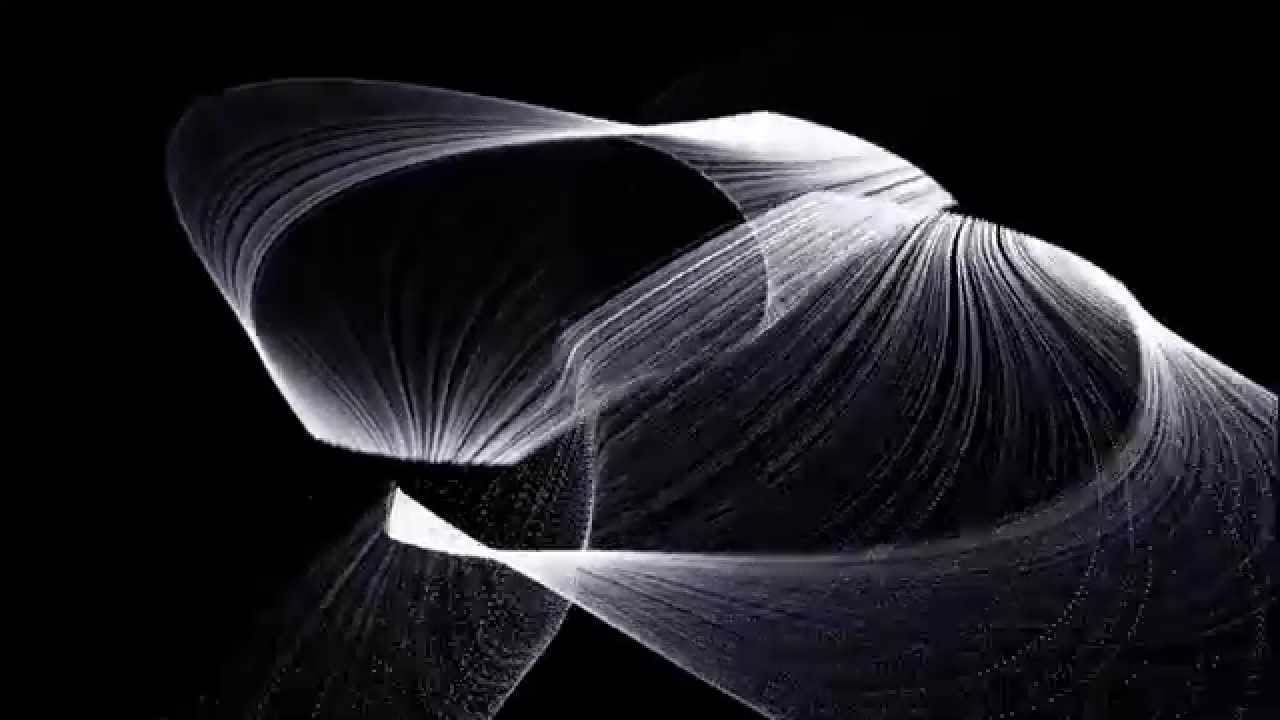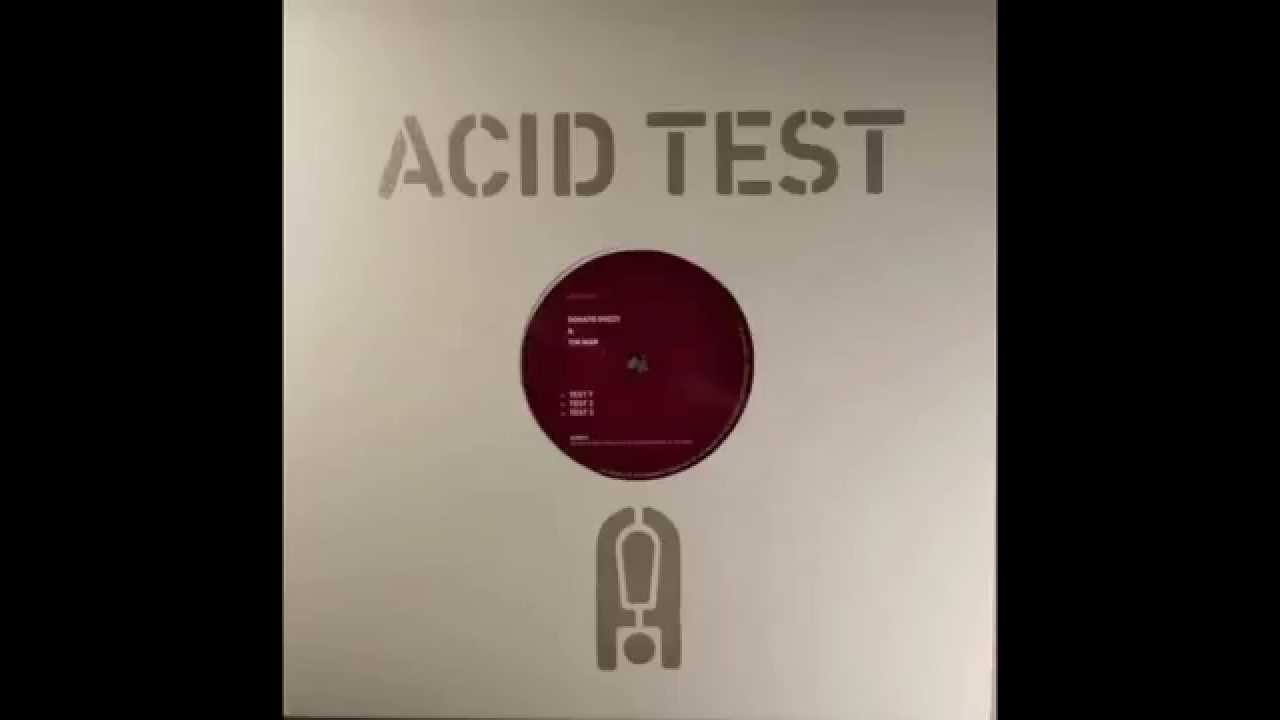"Physical placement is becoming less important to a music’s conviction of its own worth," wrote David Toop in Haunted Weather, his 2004 reflection on music, performance and the act of listening. "In this context, the imaginary dimensions of space can become more significant than its actual physical character. Computer music can pull sound out of ‘nothing’ … or can transform a recording of a place and past events, to establish a new mythic location, more closely located within the consciousness of the musician than in any locale we can directly experience as a haptic reality."
Prescient as ever, Toop’s observation has only become more relevant in the intervening years. When the book was published our globalised, decentralised club culture was still an embryonic reality, and the dawn of the era of mass social media participation, rolling news feeds and trending topics still a couple of years away. It was still possible, albeit decreasingly so, for a dance genre to evolve in relative isolation, rooted in a particular cultural or geographical location – one good example being dubstep’s gradual gestation, around that time, in South and East London.
Fast forward to 2014, a full decade on. Echoes of Toop’s statement – their force, if anything, only intensified by dance music’s ten years spent rebounding around the online reverberation chamber – can be clearly heard in a recent 032c interview with Berlin’s stylistically exploratory Janus crew. "There’s a lot of homeless club music right now," said co-founder Dan DeNorch. "There are a lot of scenes and networks that get promoted but there isn’t a place where it exists … I think as residencies become less and less the norm, club music becomes more theoretical. It’s like people could dance to this somewhere. This might go off in a club somewhere, I don’t know what club, because I don’t play anywhere … That’s still a problem that’s being worked out in club music. Because you have club music that’s made in a lot of different spaces that travels and goes everywhere, even though it’s not sonically supposed to work in the places that it ends up being played."
Since reading that interview a few months ago I’ve been reflecting on its implications. On one hand, how does that "homeless" character of much contemporary dance music affect its ongoing evolution in sound? Beyond facilitating swifter idea exchange between scenes and crews separated in space by thousands of miles, might it encourage the proliferation of traits that work against its central imperative to move bodies – and in doing so send shoots off into new and unexpected territory? Whether the relationship is causal or not, there’s plenty of evidence of those sorts of left turns taking place, whether the dynamic club-concrete collage of artists like Total Freedom, neo-grime’s crystalline tessellations, or the spatial distortions people like Lee Gamble and Eomac have been enacting upon rave and techno. You could also count SOPHIE and the emerging PC Music collective among their number too, though their work’s relationship to club music feels more ambivalent than those already mentioned, and whether you can handle listening to their earsplitting squeak ‘n’ bass for any length of time depends largely on personal taste.
But beyond that, I can’t help but wonder what it means for our own personal, physical relationships with dance music. Comfortably contained within a structured, legislated work-leisure societal framework, and lacking the shock and appeal of the new, dance music (in the West) seems to have long lost its power to galvanise wider sociopolitical and philosophical thought and action. Part of that also comes down to community, or lack thereof; speaking subjectively, it feels tougher now than for a while to find spaces – venues and club nights – in London that actively foster a sense of shared responsibility and equal investment between DJ and audience, while also willfully pushing attendees well beyond their audio comfort zone. (This, of course, is also a consequence of many externally interacting economic and political factors, whose implications are far wider reaching – and, let’s face it, more vital to society on the whole – than dance music is right now.)
One recent particular personal observation, born of many hours absorbing tracks via a laptop over the past three years: too much time spent listening to dance music solely through headphones (even great ones) changes its character and subtly reframes your relationship to it. It closes space around you, drains the music of room to breathe, squashes and foregrounds it into a reflective, introspective experience, where your mental avatar throws solo shapes on the club floor between your ears. A highly pleasurable trap, though one that it’s worth taking the effort to escape from occasionally. Hearing a well-known track in an unfamiliar context frequently feels like rebooting your knowledge of it; slate wiped clean, you’re ready to refill yourself with new, muscle-based memories.
So on one level, finding a communal space for artists and audience to share musical experience brings real rewards – socially, but also in encouraging DJs and musicians to take further risks, and to step into territory they might have otherwise avoided. The recordings of Juju & Jordash and Surgeon from last month’s Freerotation festival, both playing middle-of-the-party ambient sets, are one good example – I highly recommend spending some time with them. For best effect you’re advised to imagine seeing them take place inside a tiny low-lit yurt set up in inside a country manor house, with the rest of the building’s perpetual kickdrum pulse leaking energy in like a dripping tap. Wandering, spaced-out and slick with sweat, away from the dancefloors just down the corridor, I’d occasionally find myself stumbling across these performances and others. They felt like secret gatherings, indents in the fabric of regular time where actions and perceptions occurred at a slower pace than elsewhere.
Yet equally I’ve also recently found similar sonic refuge in headphones, via club-rooted music that conjures up viscerally affecting, unfamiliar inner spaces. Janus crew member M.E.S.H’s recent Scythians might be my favourite 12" release so far this year, not because it’s perfect, but because the environment and atmosphere it establishes is so convincing. Listening to its five tracks feels like wandering, pleasurably lost, through someone else’s memories – a liquid glass hall-of-mirrors, whose instability mimics the unreliability of human recall. Rhythmic motifs, sampled words, verbal splutterings and melodic flourishes swirl around one another, audible one moment, gone the next, never falling into quite the same arrangement twice – always the same, always different.
Delving back into Haunted Weather last month for the first time in a couple of years, I was struck by Scythians‘ resemblance to Toop’s description of this "mythic location" as a window into another person’s consciousness. But I was also struck by the persistent romance of that idea. In a world of oversharing, amid the daily online bombardment of other people’s opinions, ambiguity feels like something to be prized. Scythians, and other recent releases by artists like Fis, Shackleton and Actress, communicate inner experience through lingering images – thematic clues, gestures and auditory illusions, open to new interpretations each time you hit play. That extends right into pop music, too. On both last year’s EP2 and her new, often gloriously odd LP1, FKA Twigs’ sonic and visual aesthetic is striking in its complete mingling of corporeal experience and inner-self introspection. Her videos, which feel inseparable from the songs they’re coupled with, hinge around images of posture, physical motion and sensory experience, yet they nonetheless emerge as if from disembodied dream spaces – intricately rendered elsewheres, where typical laws of physics and perception distort around you. To watch and listen is to teleport yourself, Inception-esque, into someone else’s imagined reality, and to interpret for yourself its hidden meaning.
After three highly enjoyable and illuminating years, I’m leaving my position as new music editor at the Quietus at the end of August to pursue other projects. It’s hard to overstate how much of a privilege and a pleasure it’s been to work here, so I’d like to publicly extend my sincere thanks to Luke Turner and John Doran for giving me the job in the first place, to Laurie Tuffrey and Sophie Coletta, and to all tQ’s writers, friends and extended family.
That said, Hyperspecific will still continue to wobble forth under my steady(ish) guidance for the foreseeable future, and hopefully in a more regular manner, as befits its ‘monthly column’ tag. The preceding introduction has laid out the mindset for this month’s edition; a selection of dancefloor and not-so-dancefloor music dedicated to enhancing the grain of this world, or dragging you through the portal into another one entirely.
Lee Gamble – Kuang EP
(PAN)
Eomac – Monad XVII
(Stroboscopic Artefacts)

When I spoke to Gamble recently for The Wire, he described a fascination with manipulating sound on a microscopic level – for constructing club tunes with scientific precision, an approach markedly different to the ‘jam now, think later’ ethos of much current hardware house. On translucent breakbeat flurry ‘Kali Wave’ and ‘Girl Drop’, a thirteen minute long, beatless flight across a green-tinged landscape, you’re drawn inexorably inward. The worlds they evoke are striplit, desolate, their crumbling features familiar yet somehow uncanny in appearance. They remind me a little of the irradiated strangeness of the Britain of Chris Petit’s 1979 film Radio On, where ostensibly mundane landmarks – identikit country roads, seaside towns, city centre hotels and flyovers – are charged with an unearthly glow, shedding new light on a pre-Thatcher landscape on the cusp of rapid change. A more recent reference point might be current Channel 4 series Utopia, where lingering, colour-saturated shots lend the familiar countryside around London the dreamlike intensity of a desert mirage, more Australian outback than Home Counties.
"I’ve noticed recently that I really like the idea of making these little worlds, almost, little spaces somewhere that you could just go into," said Gamble during our interview, explaining the thematic link between Kuang and KOCH. "You could be in there, and then you’re out, and you’re in another one, [which] might feel nicer, feel less nice, feel more warm, feel less warm, feel colder, feel more purple or more blue, or whatever. I really enjoy making music like that, where I’ve got the main structure of a track, then I can really get in there and give it some viscosity, texture, like a material or something. That’s a processual thing, technically, but I’ve learned little ways to do that. So it’s like, this track’s there, it’s not here. I don’t think any of my music is here, I really don’t."
I’ve reflected a lot on that conversation since, and how it relates to other artists operating in similar modes. An obvious kindred spirit to Gamble’s music on Kuang and KOCH is Actress, whose work in turn is steeped in the influence of veteran Detroit minimalist Terrence Dixon. Listening to Dixon’s 2013 series of Reduction 12"s, under his Population One alias, was like inadvertently stepping through an invisible doorway into a parallel reality. Stripped of nearly all recognisable dancefloor signifiers, they imagined techno as an unending stream of near-subliminal pressure, each track’s single looped motif turning back in on itself at the end of each iteration. Actress’ newly released Xoul 12" is markedly less challenging for those not accustomed to Dixon’s psychic deep-dives, but possesses a similar eerie power, like gamelan played by an ensemble of robots, or a music box discovered on an alien world. As I’ve enthused in this column before, I’ve also had the music of New Jersey’s Joey Anderson on near constant repeat. Fittingly for a producer who cut his teeth as a semi-pro house dancer, his After Forever album on Dekmantel blurs the lines between external sensory perception and your responsive internal ecology of neural pathways, rapid electrical impulses and slower hormone blushes. "I was mostly a dancer [in the past]," Anderson told me when I spoke to him earlier this year. "So I can’t run from that, it’s always going to be in my subconscious when I’m working on music." Lacking house’s regular kick-snare funk, Anderson’s tracks instead coast along as rolling cascades of percussion, sparring drums and melodic sleight-of-hand, turning your mind further inwards as you breathe deeply and concentrate on keeping pace.

Throwing Shade
‘Chancer’ / ‘Blanx’
(Happy Skull)

SOPHIE
‘Lemonade’ / ‘Hard’
(Numbers)
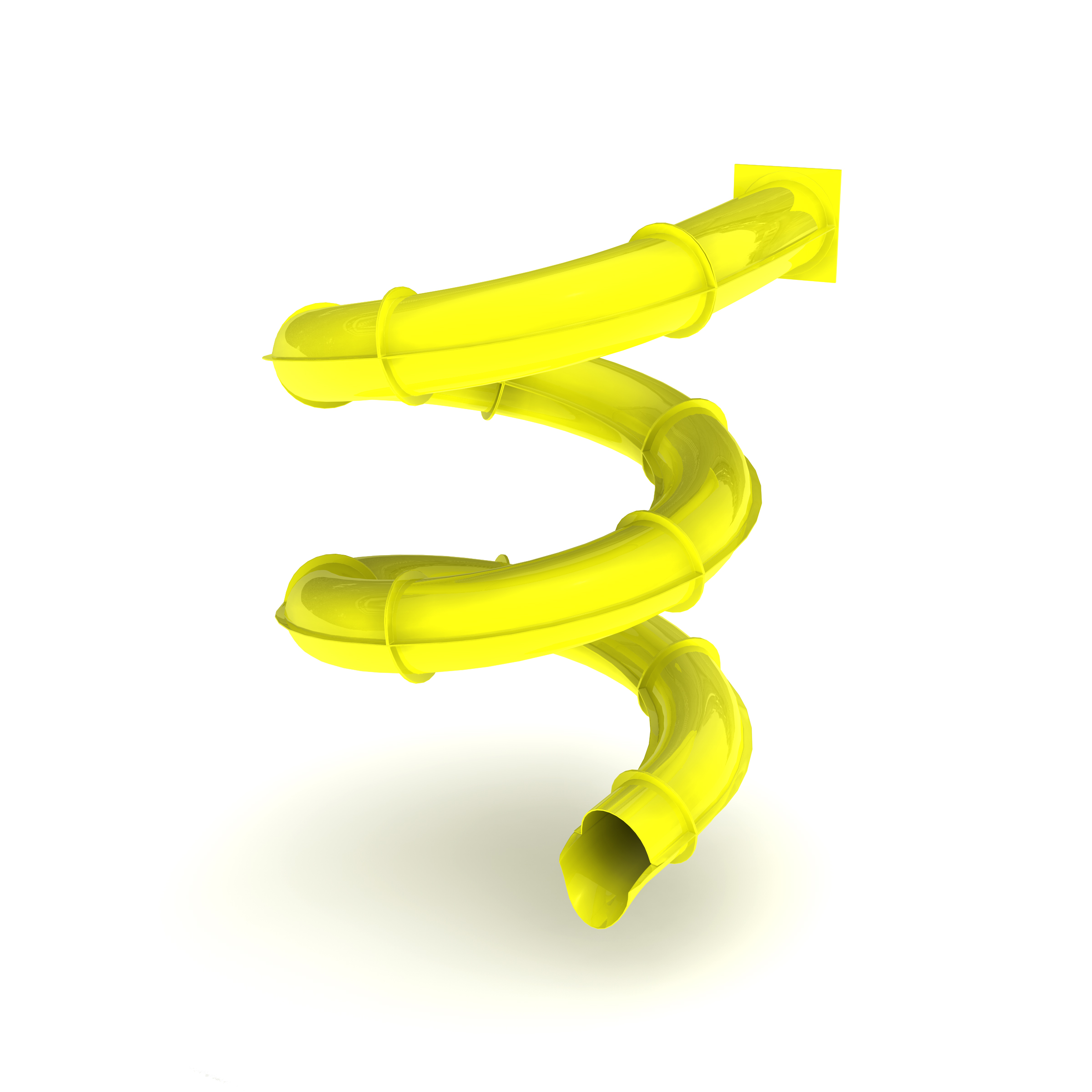
Flip the record, however, and ‘Hard’ is a more appealing proposition. Coming across like post-Classical Curves digi-funk accelerated to a state of delirium, it’s a freaky mess of glitterball melodies, militarised drum smacks and hoover bass stabs that career wildly all over the place. As with male producer SOPHIE’s current press image – depicting a female model in a world of fluorescent colour, cropped to near-facelessness and striking an ambiguous pose – there’s something distinctly uncomfortable about the way its pitched-up, infantilised voice delivers suggestive one-liners about "PVC" and "latex gloves" like a sexy automaton. You sense that provoking discomfort is part of the aim here – a fact intriguing enough to make me slightly curious, in spite of myself, to hear future SOPHIE music. In truth the entire thing – whether intentionally or not – comes across as rather silly and Carry On bawdy, rather than pointedly aggressive.
Different Fountains – Muybridge
(Different Fountains Editions)
The dance music community in Belgium is on strong and productive form at the moment, via a cluster of labels and associated artists including Brussels’ young VLEK and Bepotel crews as well as the longer running Meakusma, home to previous transmissions from international artists Terrence Dixon, Upperground Orchestra and Madteo, as well as a series of brilliant 12"s compiling new music from the Belgian underground. As is often the case outside the heartlands of journalistic attention on dance music, what’s striking about the music emerging from these collectives is its lack of allegiance to particular scenes or styles; the VLEK label, for example, has effortlessly swerved from adventures in tripped-out house and techno from Bepotel and Sagat, to subby club bangers, to murky, impulsive collage compositions from Aymeric De Tapol and the UK’s WANDA GROUP. There’s something to that collective’s shared activities and DIY approach – with hand-crafted and screenprinted label artwork, collaborative musical projects and regular parties – that reminds me a little of Bristol’s Young Echo crew and associated labels like No Corner and Peng! Sound; a connection further echoed in their shared ear for dense atmospheres and heavy-lidded, immersive dub.
Brussels duo Different Fountains are part of that extended crew of friends and collaborators, and their two EPs for their own label this year – of which Muybridge is the second – epitomise many of those qualities. Their beats fall roughly into a swung, broken house framework, but they’re teasingly loose, assembled into systems where tension ricochets from drum hit to drum hit like a pinball, always threatening to half-dissolve in a cloud of effects. One clear touchstone for ‘Muybridge’ itself is Skull Disco era Shackleton; its voices, drowned in enough reverb and delay as to become indistinct, drift through cool desert air and rub against percussive patterns carving out intricate hieroglyphics against a star-strewn night sky. Though triggering an instant desire to dance in wide open space, it simultaneously begs to be dropped loud in your nearest subterranean sound system outfitted dive; those lashes of sub-bass and acres of room could swallow a roomful of bodies whole. Taking the arcane network of internal tensions that powers the original track and splaying it outward across seven minutes, the terrain evoked by London resident Karen Gwyer’s remix is smoother but just as transportive – by the time it uncoils, halfway through the track, into a vortex of cross-connected rhythms and fizzy melody, you’re already long lost in its depths. There’s a Different Fountains full-length album, Shrimp That Sleeps, due out on Meakusma next month; if the rest of this year’s output from them is anything to go by, it should be quite something.
Kucharczyk –Demon Techno W Okularach
(Mik Musik!)
Skipping across Europe a few hundred miles, we arrive at Poland’s Wojciech Kucharczyk, head of the Mik Musik! music label and – as the title of this album proclaims – self-described Demon Techno W Okularach ("Techno Demon In Spectacles"). With this column’s subject matter in mind, there are few current European artists I can think of who’ve created more of a convincing world for followers to immerse themselves within. Mik Musik! has been running since the 1990s – the era of Kucharczyk’s acclaimed former project Mołr Drammaz – but after an extended hiatus he rebooted the label last decade and embarked on its formidable current run of form, taking in all manner of mad-scientist electronic experimentations from Kucharczyk himself, percussive dancefloor drum-circle freakouts from RSS B0YS, the windswept post-industrial romance of Paweł Pesel’s Ekscentryzm, the haunted autumnal landscapes of Mangrove Mangrave, and more. One of the most curious and exciting aspects of this iteration of Mik!, and one that heightens the sense of involving yourself in a consciously sculpted, self-contained world, is that you’re never quite sure how many of these artists might actually be Kucharczyk himself operating incognito. Many of these albums have been released as part of the label’s ‘Even More Secret Series’, with the true identity of their creators left unknown. In any case he’s a prolific artist, with records under multiple aliases – including his former guise The Complainer – emerging regularly through the Mik Bandcamp page, where you can also find the records listed above.
Demon Techno W Okularach further travels down the wormhole of mechanistic dance music Kucharczyk has been carving out for a while. Like some of of the better, more anarchic recent techno-into-noise music from producers such as Steve Summers, Container and Svengalisghost, these raucous, churning beasts sound as though they’ve been hewn from chunks of malleable organic matter. They often seem to disintegrate and corrode as they play, like clunky old steam trains falling deeper and deeper into rust, wreck and ruin. But alongside the often po-faced intensity of much of the US set, they’re marked out by that telltale streak of mischievous humour that runs through Mik’s entire output (a closer comparison in that sense might be the puckish recent 12"s from Dom Butler of Factory Floor’s Bronze Teeth duo). Tracks explode into action and drop out just as quickly, take abrupt left turns to knock listeners out of their steady groove, and are often ushered into action by bursts of spoken dialogue, delivered in studied, electro-mannequin monotone. Sequenced beautifully so that tracks flow into one another with nary a break, the overall feel is of being dropped into the middle of a propulsive, grinding peak-time DJ set, complete with some particularly lovely emotional peaks. ‘Ponoson And Nothing Instrumental’ is gorgeous decaying disco in the manner of a Soundstream edit, and builds to an all-too-brief climax of synthesised strings that cuts out just as it’s threatening to launch into orbit.
Tin Man – Ode
(Acid Test / Absurd)
Donato Dozzy & Tin Man – Test 7
(Acid Test / Absurd)

With its cool reverberations and sensation of perpetual motion – of long-distance transit between one place and another – new album Ode could as easily be called Trans Arctic Express. Fingers of ice prickle outward to form spiderweb patterns across its glassy surfaces; rails clunk and clatter underfoot; percussive features that suggest telegraph pylons and snow-dusted conifers linger in the middle distance before swooping by in an abrupt rush. In the distance lies empty tundra, through which sounds echo outward to the horizon. Through this space swim Auvinen’s 303 motifs, the music’s defining feature – on ‘No New Violence’ and ‘Depleted Serotonin’ superheated acid lines burn upward through the permafrost like magma from cracks in the earth’s crust, while ‘What A Shame’ is craggy and treacherous as a glacier-carved cliff face. You end up dancing in slo-mo, silhouetted by their internal glow as if caught in headlights. Their combination of liquidity and pinpoint intricacy recalls the virtuosic, lubed-up 303 juggling of early Plastikman, but lacking Hawtin’s mechanistic, cyborg sensibility, they also remind me in atmosphere of Luomo at his best: the same shivery feel of a hot-blooded organism stranded in a freezing far north environment, the same spun-out, dissociated dancer’s grace.
Tin Man & Donato Dozzy – ‘Test 7’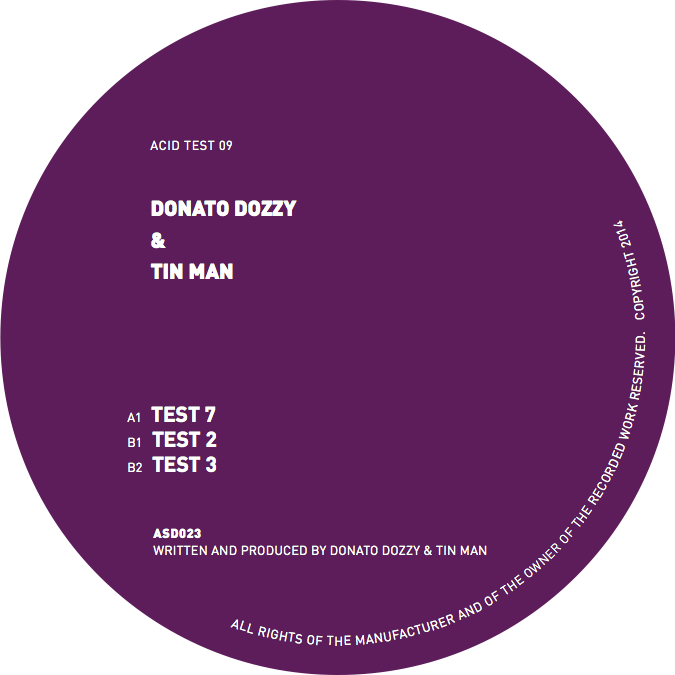
Surgeon – Fixed Action Pattern
(Token)
Surgeon – Surgeon EP (remastered reissue)
(SRX)

Looking back to 1994, what’s particularly curious is how comparatively little tracks like ‘Magneze’ and ‘Move’ have aged in the two decades since they were made. That’s in part to do with trends, of course, and with an increased number of younger artists currently stripping this sound for ideas, it feels familiar as a contemporary club style. Equally brusque in tone, and equally influenced by Jeff Mills’ perception-bending early Waveform Transmissions work, as then-contemporary material from Downwards boss and frequent collaborator Karl O’Connor, these tracks remain markedly more psychedelic in effect. ‘Argon”s sinewy melodies are knotted together into a writhing, snakelike mass, with details momentarily emerging from the fray before worming away into the depths again. Listening to the way ‘Move”s sour, reinforced tones are layered into bracingly odd harmonic interactions, leaving a metallic taste in the mouth, I’m also reminded of Child’s teeth-grindingly intense recent improvised live sets with Blawan under the duo’s Trade moniker. Which speaks less to Surgeon’s having remained in a fixed place (he hasn’t), than to the potential power to be unlocked through mining deeply into an aesthetic over many years.
Dour Tonic Input & DJ Votive – Yogyakarta / Dead Roads
(Broken60)
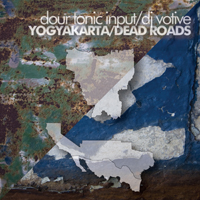
This latest of their Broken60 cassette releases, described as an homage to the hip hop beat tape, is a case in point. Drawing on Indonesian gamelan, dusty breakbeats and luscious New Age synth shimmer, there’s a distinct feel of 1990s chillout room ambient and trance to proceedings, lending the tape an out-of-time air, like a historical curio newly rediscovered after decades tucked away in a shoebox. Both Dour Tonic Input and DJ Votive are apparent newcomers to the label, but I’m not convinced these producers aren’t known operators in disguise – the latter’s B-side ‘Dead Roads’ opens with the cracked voice of William Burroughs ("ectoplasm, crystal balls, spirit guides and auras … diseased demon lovers"), who also featured prominently on label boss TVO’s 2013 tape Red Night. What follows is a gorgeous, half-hour long meditation where watery melodies and singing voices dissolve and billow in seas of reverb. Dour Tonic Input’s A-side, a series of gamelan-sampling tracks titled Yogyakarta, further departs from previous Broken20 form; fitting the beat tape format, they feel more like sketches than completed artefacts – fragmented tone clusters looped and corralled into turbulent miniatures, forever in motion, never resolving. As is often the case with the label’s releases, there’s enough here to get lost in for quite some time.
Hyperspecific returns next month with another selection of current electronic and dance music


